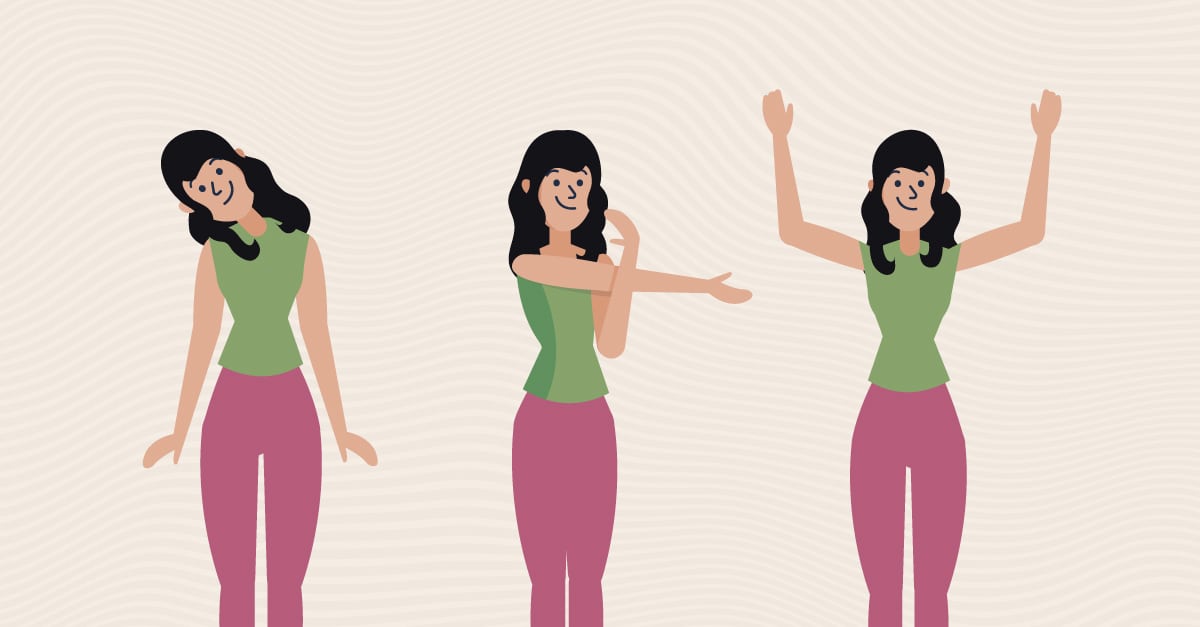Feeling pain in your shoulders? Have a stiff neck that tightens when you try to move your head? You may be part of the one-third of people who experience neck pain every year, or the 70% of those who develop shoulder pain at some point in their life.
The most common cause of pain in your upper back or neck is your posture. Take a quick note of how you’re sitting or standing right now. Are you hunched over your phone? Perhaps slumping in front of your computer? This can put extra strain on the muscles and tendons in your neck and shoulders. Pain in this area can also develop due to other factors, such as carrying around a heavy bag on one shoulder, sleeping in a funny position, or lifting something heavy with less-than-ideal form.
Although neck and shoulder pain occasionally fades quickly, other times it can linger on. To make matters worse, neck and shoulder issues often return after they initially disappear. Luckily, there are a few key things you can do to keep these joints moving as they should. Be sure to discuss these with your doctor to ensure they are appropriate for you before you try them.
Pain-Relieving Stretches
Use these stretches to relieve tension and increase your ability to move your neck and shoulders. Try taking a break once or twice per hour throughout your day to perform these stretches. Hold each stretch for about 20 seconds before moving on to the next one.
The Ear-to-Elbow Stretch
To target your trapezius — the large muscle that reaches from your neck to the tops of your shoulders to your upper back — get some side stretching action in your neck.
While standing or sitting up straight, drop your head down and to the right so that your right ear is hovering over your right shoulder. Pull your left arm down to further sink into the stretch. Then, repeat on the left side.
The Crossover Stretch
This stretch can loosen up your deltoid muscle, which sits on the top of your shoulder.
Relax your shoulders, letting your arms hang heavy. Reach your right arm across your chest with your arm parallel to the ground and your fingers pointing to your left. Use your left hand to hold your arm in place. Then switch arms.
The Corner Stretch
Use the corner stretch to elongate muscles in your chest, shoulder blades, and front of your neck.
First, put yourself in the corner — literally! Stand a foot or two away from the walls, facing the corner. Bend your elbows, leaving your arms in an “L” shape with your fingers pointed toward the ceiling. Place each forearm on a wall and move your upper body forward, leaning in until you feel the stretch in your shoulders.
Strength-Building Exercises
While stretching can help, it can actually make you lose strength in your stretched muscles. However, pairing stretches with moves that make you stronger can help prevent injuries.
Start with two or three repetitions of each exercise, and gradually work up to doing one or more sets of eight repetitions.
The Chin Tuck
Feel like you need to release tension in the back of your neck and shoulders? Try this stretch.
Make sure you’re standing up straight. Next, tilt your chin slightly down and move your head backwards. In other words, do the move you always try to avoid in photographs and give yourself a double chin! Squeeze and hold for ten seconds.
The Shoulder Flex
Use this move to help strengthen various muscles in your shoulder.
Lie down and clasp your hands together, resting them on your pelvis. Slowly move your arms up over your head, pause, and then return to your starting position for one repetition.
The Wall Slide
Wall slide exercises help you build up the muscles near your shoulder blades and stabilize your shoulder joint.
Stand with your back pressed up against a wall and your feet a few inches away from the wall. Move your arms into an “L” with the tops of your arms pressed against the wall and your fingers pointing toward the sky. Reach your arms up over your head, keeping your arms in contact with the surface behind you. Bring your arms back to the starting position.

Conclusion
You can help heal neck and shoulder pain by avoiding activities that worsen pain, stretching out your neck and shoulder, and strengthening the muscles in these parts of the body. You may also want to try icing your neck and shoulder or taking nonsteroidal anti-inflammatory drugs (NSAIDs) such as ibuprofen.
If these measures don’t work and your pain persists, it may be time to see a specialist. Orthopedic doctors can provide pain-relieving injections or surgeries when required, while physical therapists can help you build strength and improve your posture. Ultimately, pain relief is possible — you just have to find what works best for you!
